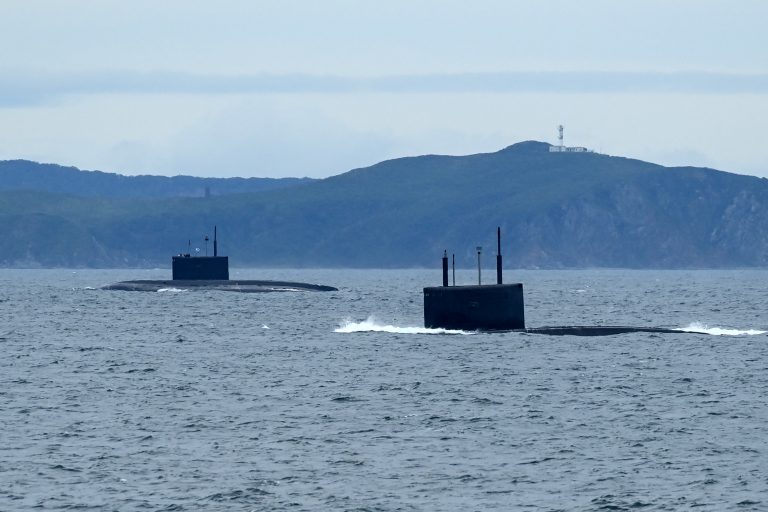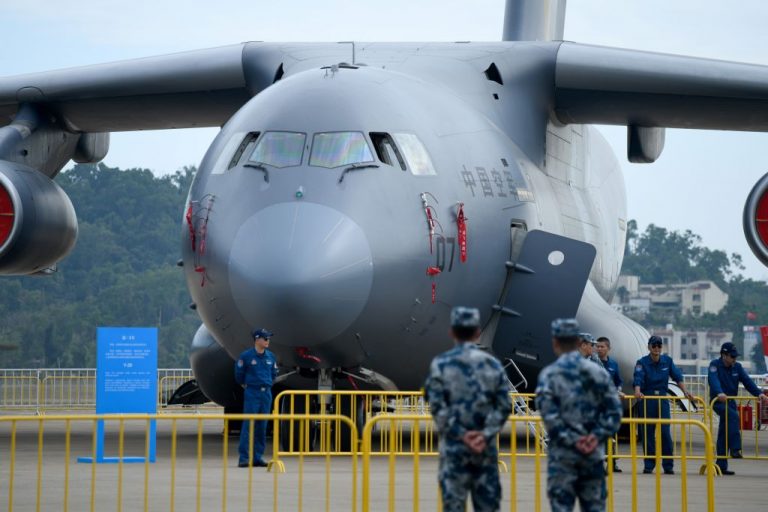Russia is reportedly in the process of fitting some of its nuclear submarines with a new underwater weapon that the Kremlin claims has the capability to create a radioactive, tsunami-style wave that could devastate coastal regions and leave them uninhabitable.
The weapon, known as Poseidon, is what Russian leader Vladimir Putin calls one of his six “super weapons.”
Reports indicate that the manufacturing and testing of the torpedoes is complete, an unnamed source close to the Russian military told the state-run media outlet TASS.
According to the source, “The first batch of Poseidon ammunition has been manufactured and will be soon delivered to special-purpose nuclear-powered submarine Belgorod.”
The Kremlin claims that the weapon, fitted with a nuclear power unit, has an unlimited range and can reach speeds of more than 200 km/h or 124 mi/h under water. The device has been previously called a “doomsday” device as it is believed to be able to trigger radioactive ocean swells that would render coastal regions inhabitable.
Success
You are now signed up for our newsletter
Success
Check your email to complete sign up
Images of the weapon first leaked in 2015, but an official announcement concerning their development didn’t come until 2018. Some media outlets have referred to the weapon as “inhumane” and “fearsome” and in 2018, Putin claimed that there was no weapon on the planet that could either counter the Poseidon or destroy it.
“They are very low noise, have high maneuverability and are practically indestructible for the enemy. There is no weapon that can counter them in the world today,” Putin claimed at the time.
Former U.S. assistant secretary of state for international security and non-proliferation, Christopher A Ford, said in 2020 that the weapon was created in order to “inundate U.S. coastal cities with radioactive tsunamis,” and in 2022 the U.S. Naval Institute said the development of such a weapon will have a significant and terrifying impact on the nuclear arms race.
In a statement last year the institute said, “Perhaps most frightening, this nuclear weapon has the potential for autonomous operation. A fully operational Kanyon [Poseidon] would have an incredible strategic impact. As a new delivery platform, it is not covered by current nuclear arms treaties.”
Last year, the Russian state media claimed that regions of the planet the size of the United Kingdom could be wiped out by the weapon.
Dmitry Kiselyov, a Russian TV host, who is known to have close ties to Putin, said that Moscow should use the new weapon to “plunge Britain to the depths of the ocean.” He claimed that the weapon could “raise a giant wave, a tsunami, up to 1640 feet high,” adding that, “This tidal wave is also a carrier of extremely high doses of radiation. Surging over Britain, it will turn whatever is left of them into radioactive desert, unusable for anything. How do you like this prospect?”
READ MORE:
- Lavr Kornilov, the ‘White’ General Who Founded Russia’s Anti-Communist Resistance
- Russians Take Heavily Fortified Ukrainian Town of Soledar in Donbass Campaign
- US Government Blacklists Companies With Ties to Russia
No official confirmation
The TASS noted that there has been no official confirmation on the information from the Russian Ministry of Defense concerning the Poseidon being armed, as the report does not mention nuclear warheads and refers to the torpedoes as only “nuclear-capable,” indicating that the first batch may be unarmed.
Dmitry Stefanovich, a Research Fellow at the Center for International Security, told The War Zone, that he suspects the weapons, reportedly being fitted, are most likely a series of test torpedoes which would be necessary to determine how the Belgorod performs with a full set of six enormous torpedoes on board, compared to the single test rounds that have likely already been carried out.
He also stressed that it’s possible the warheads have been developed and tested in some scenarios, however not explosively. “It probably makes sense to have those [warheads] already attached to the [first batch of torpedoes] mentioned in the TASS piece,” he added.
Considered one of the weapons’ more concerning features is its ability to roam the oceans indefinitely before unleashing a surprise attack. The weapon is not only difficult to detect but can avoid missile defense systems.
That said, even with the Belgorod in service, Stefanovich believes it will likely be some time before the Russian Navy will be able to use the weapon, explaining that more tests and training are likely required. “Let’s just say that launcher operations should be pretty complicated and require a lot of practice,” he told The War Zone.
Considering the geopolitical situation it’s more likely than ever that the Kremlin will make bold claims about its new weaponry, however Stefanovich believes that the flow of recent reports, albeit unconfirmed, does indicate that the weapon is approaching the point where it could be used.
However, the wider effects of Russia’s war on Ukraine, including sanctions imposed on the country, could be hindering the Kremlin’s progress. In addition, Russia’s reliance on foreign electronics, required for numerous advanced weapons systems, may hinder its progress as well.







